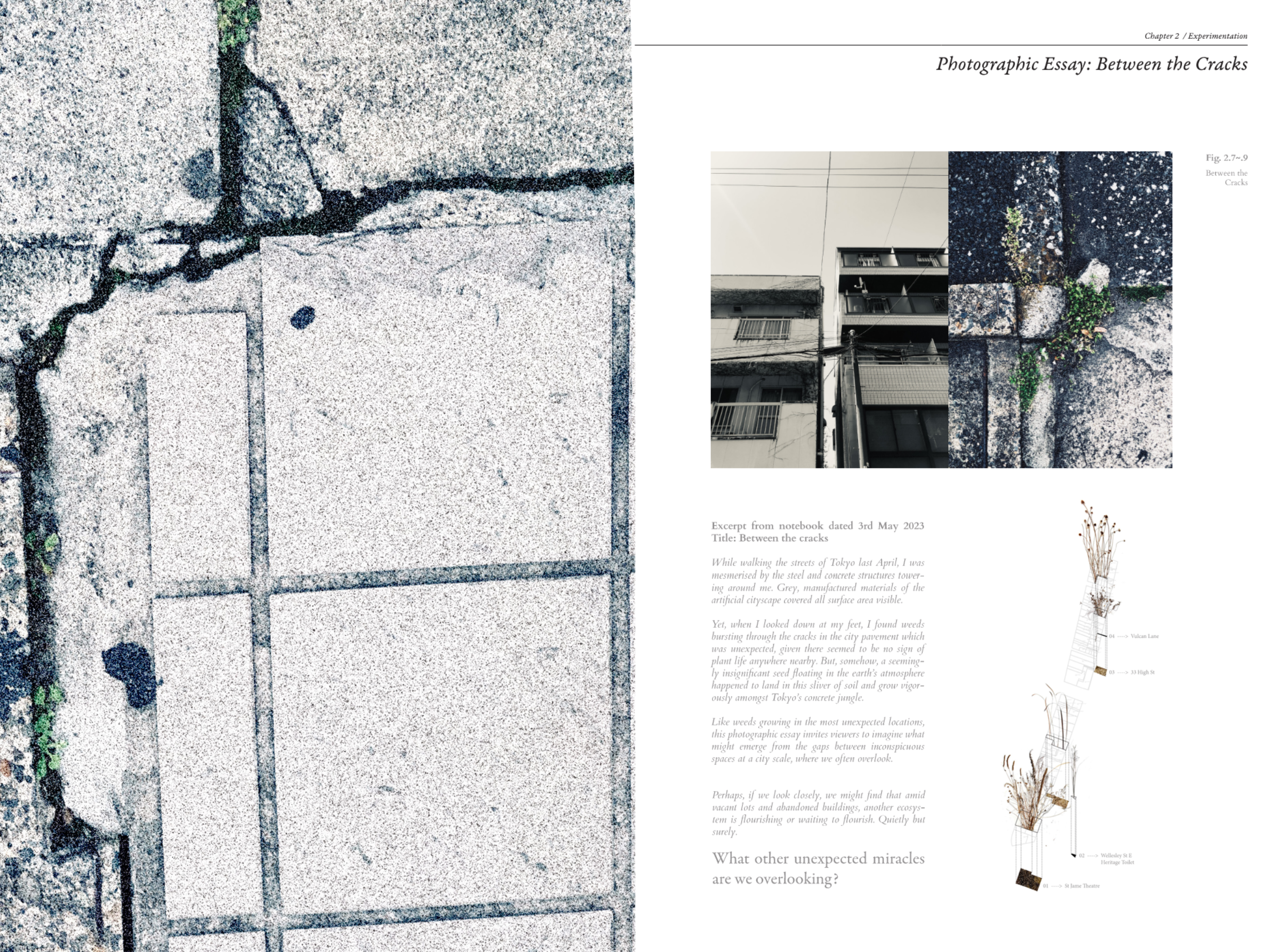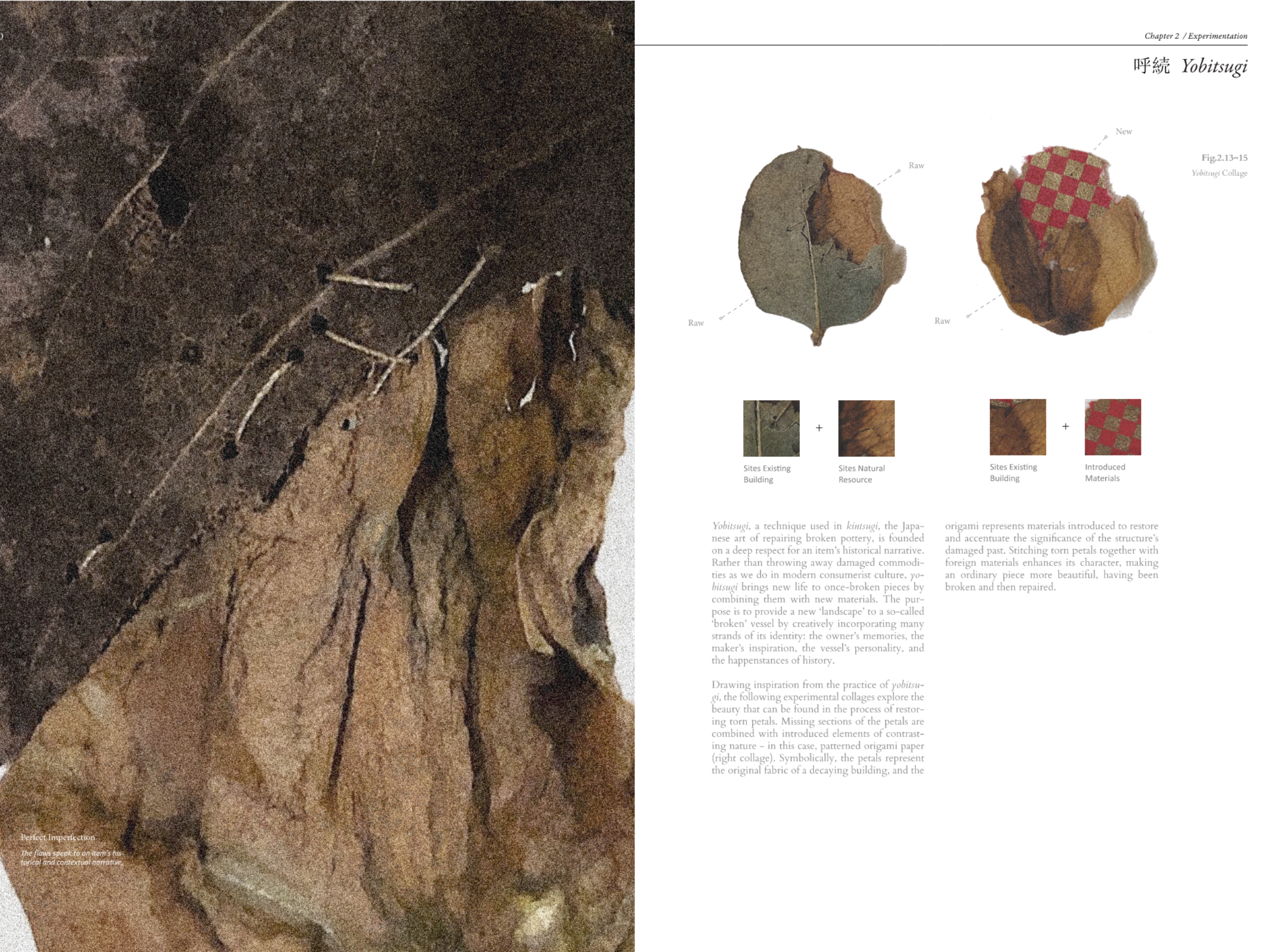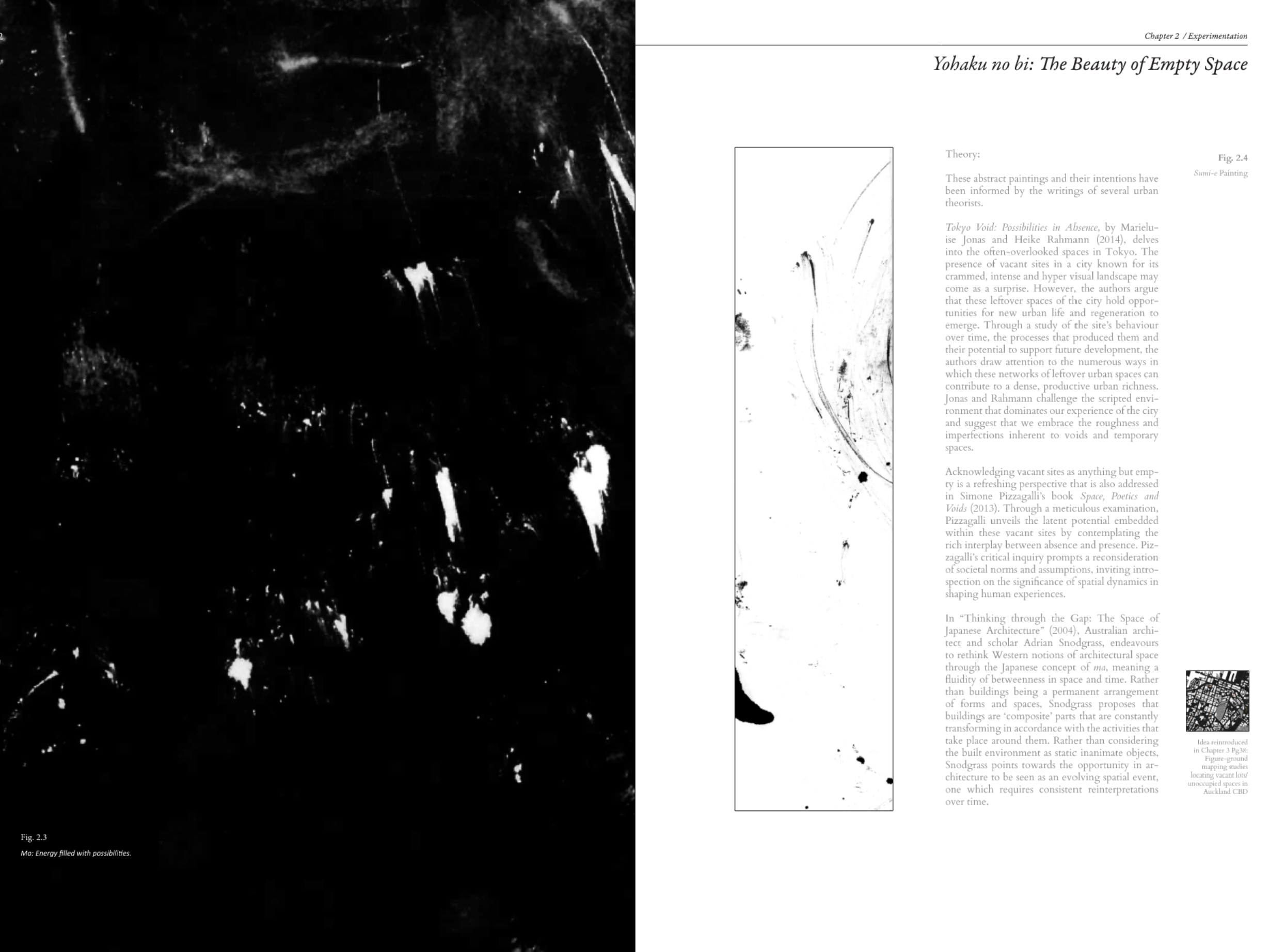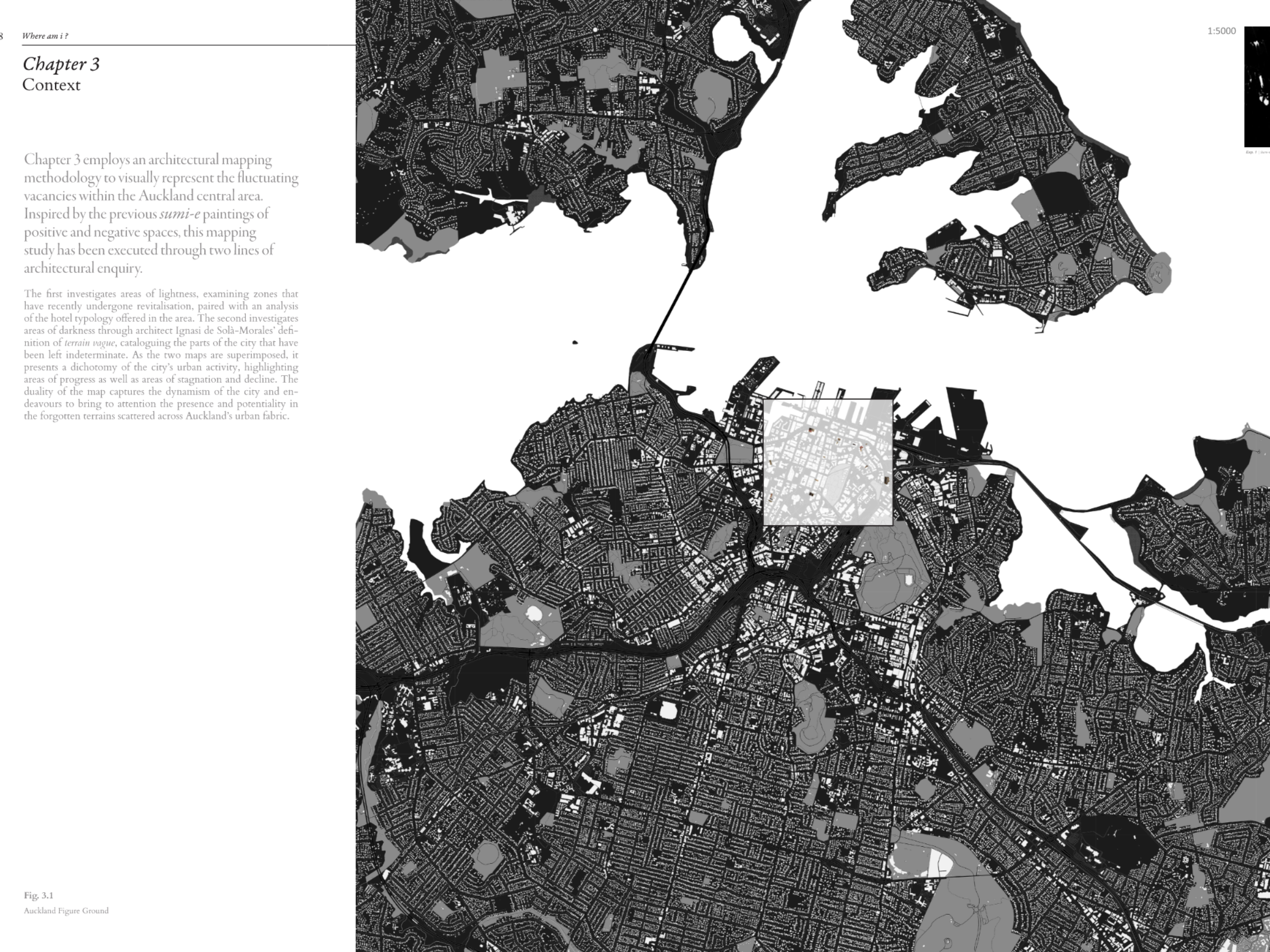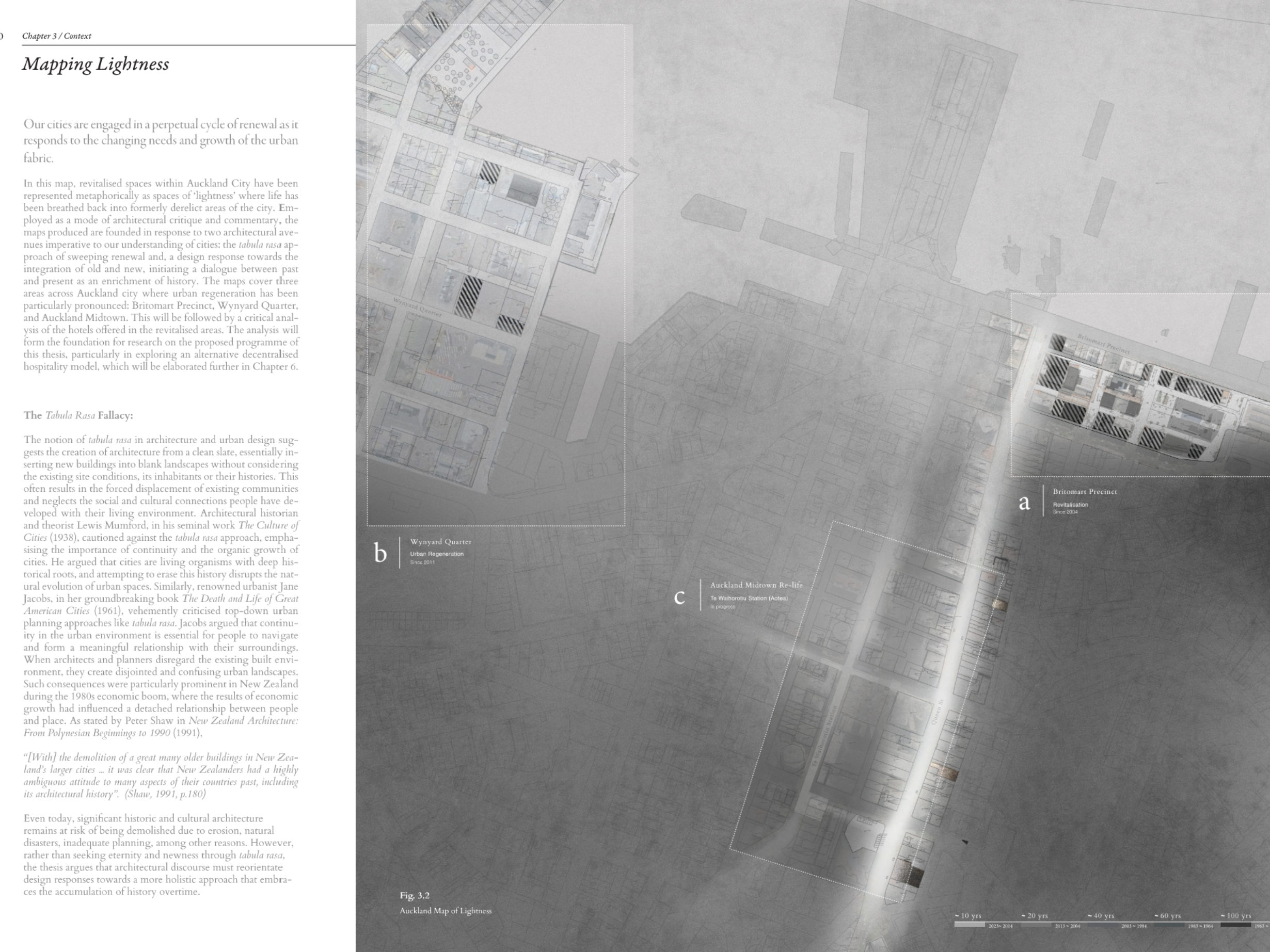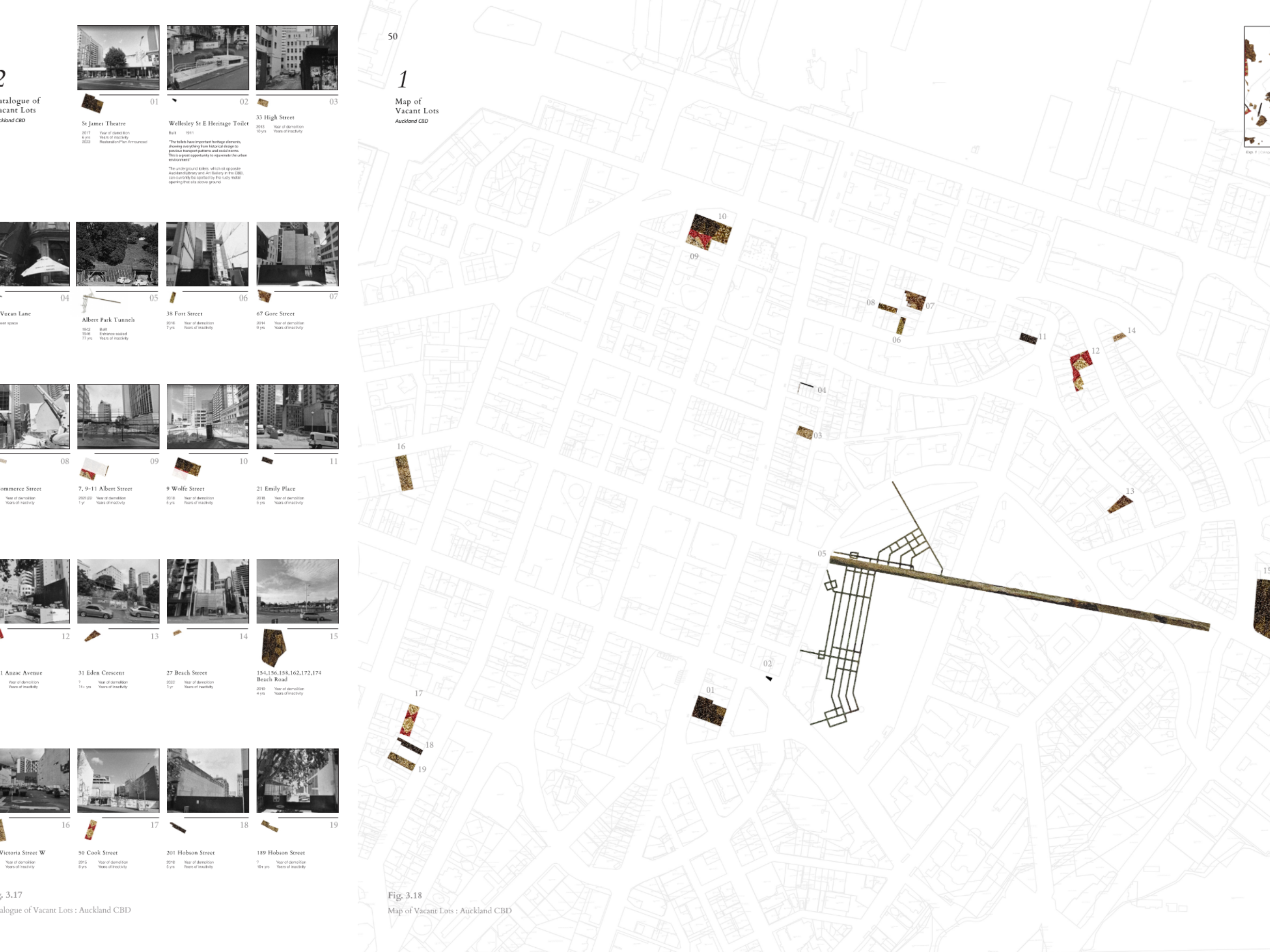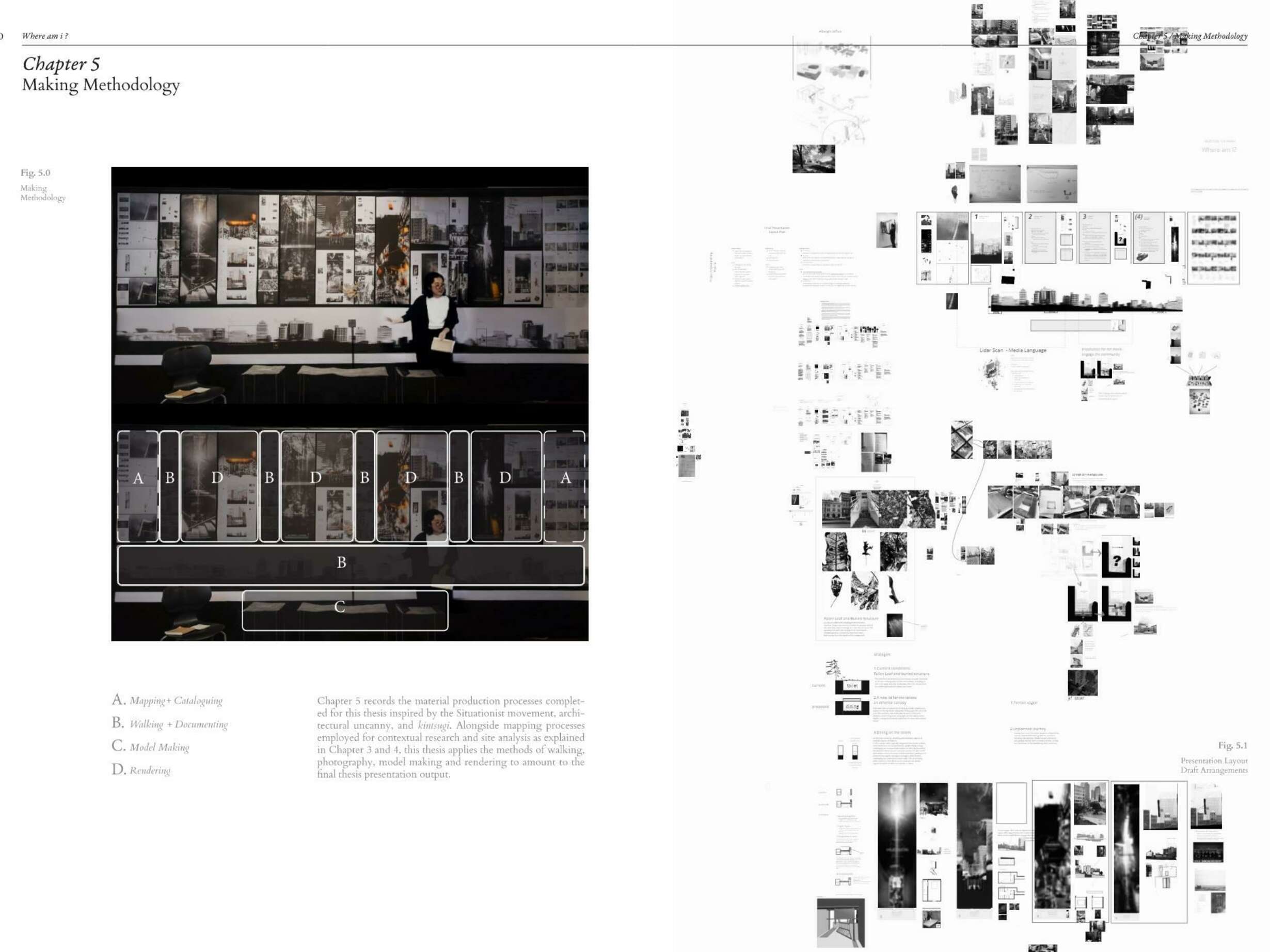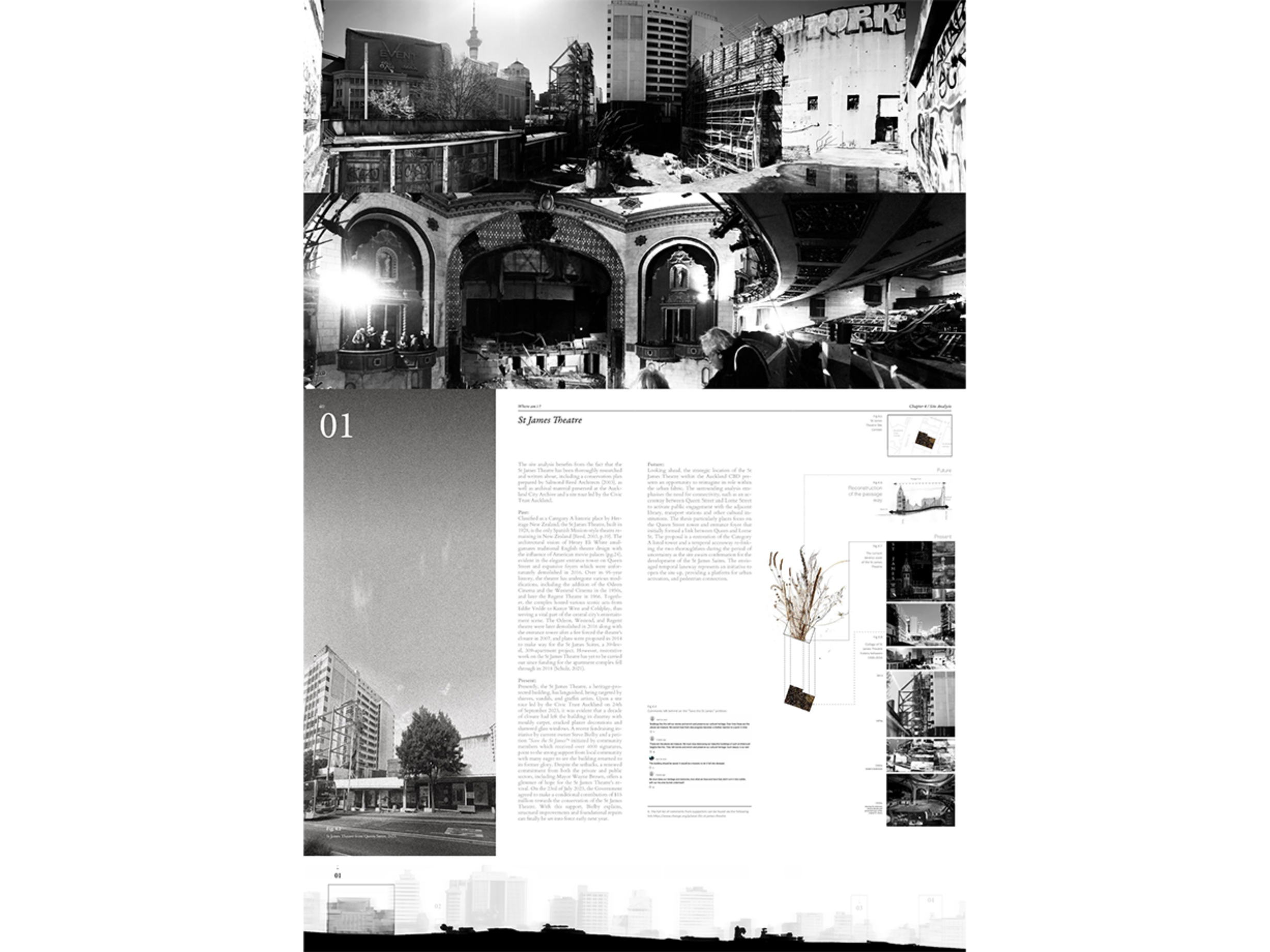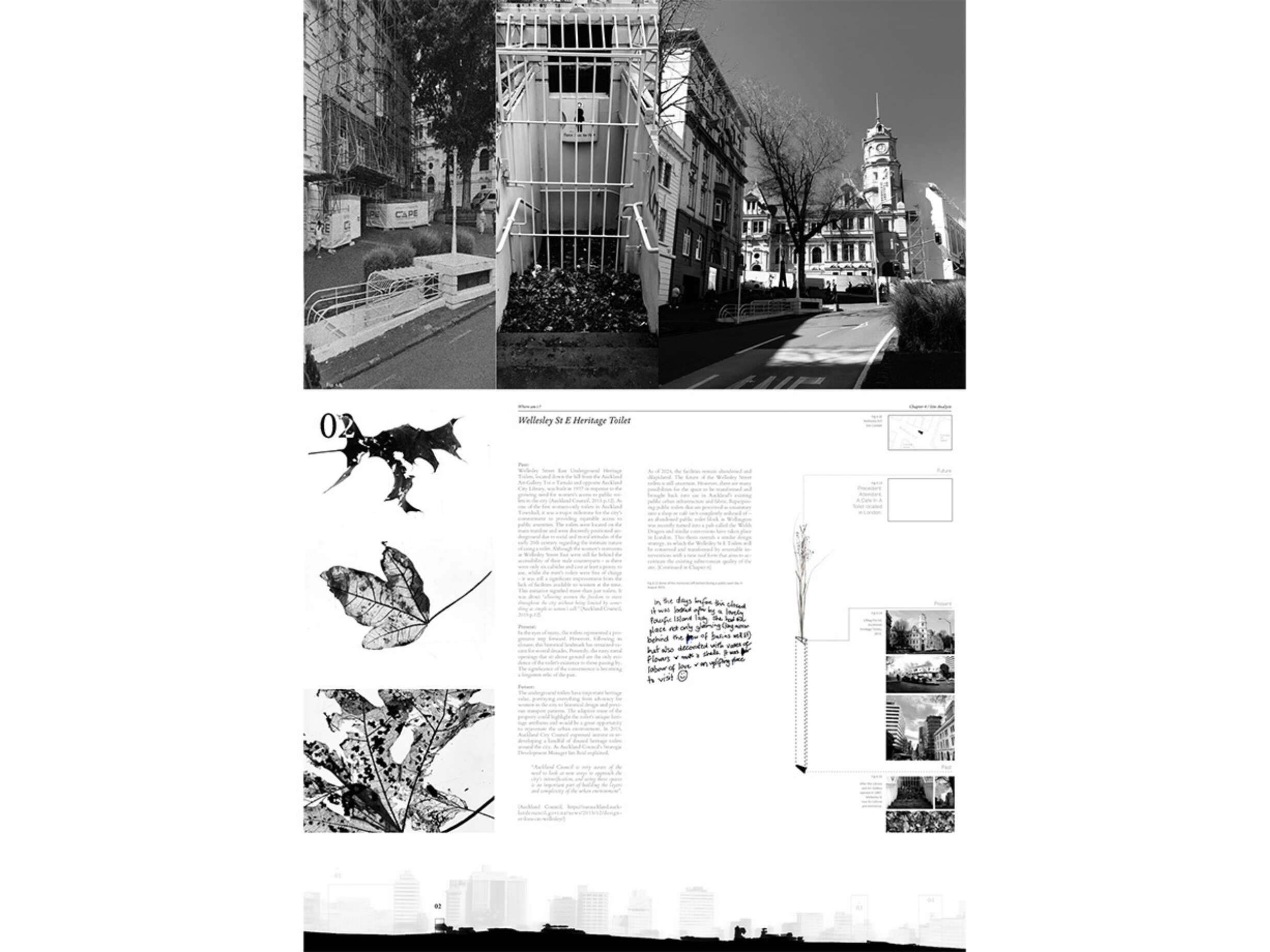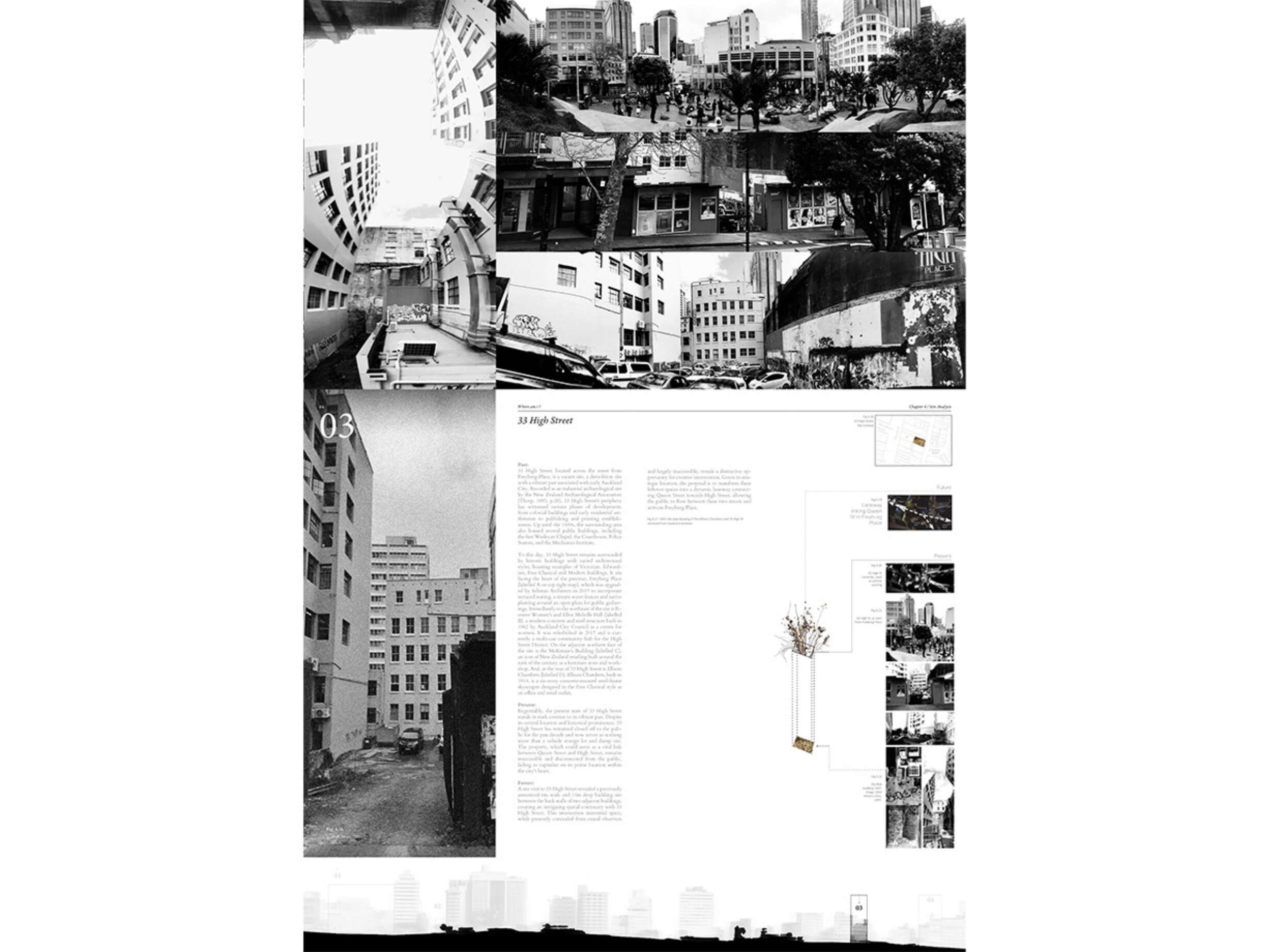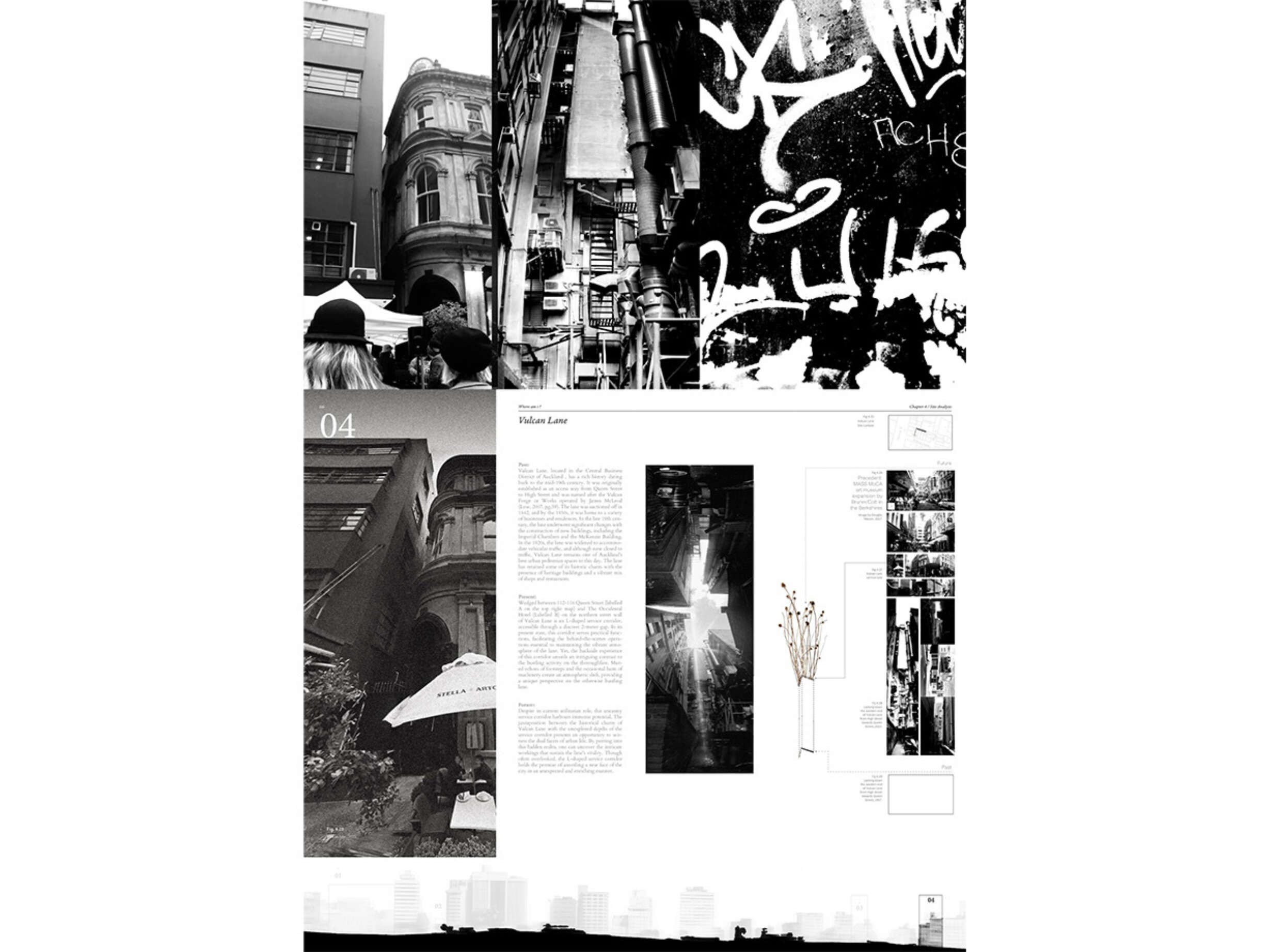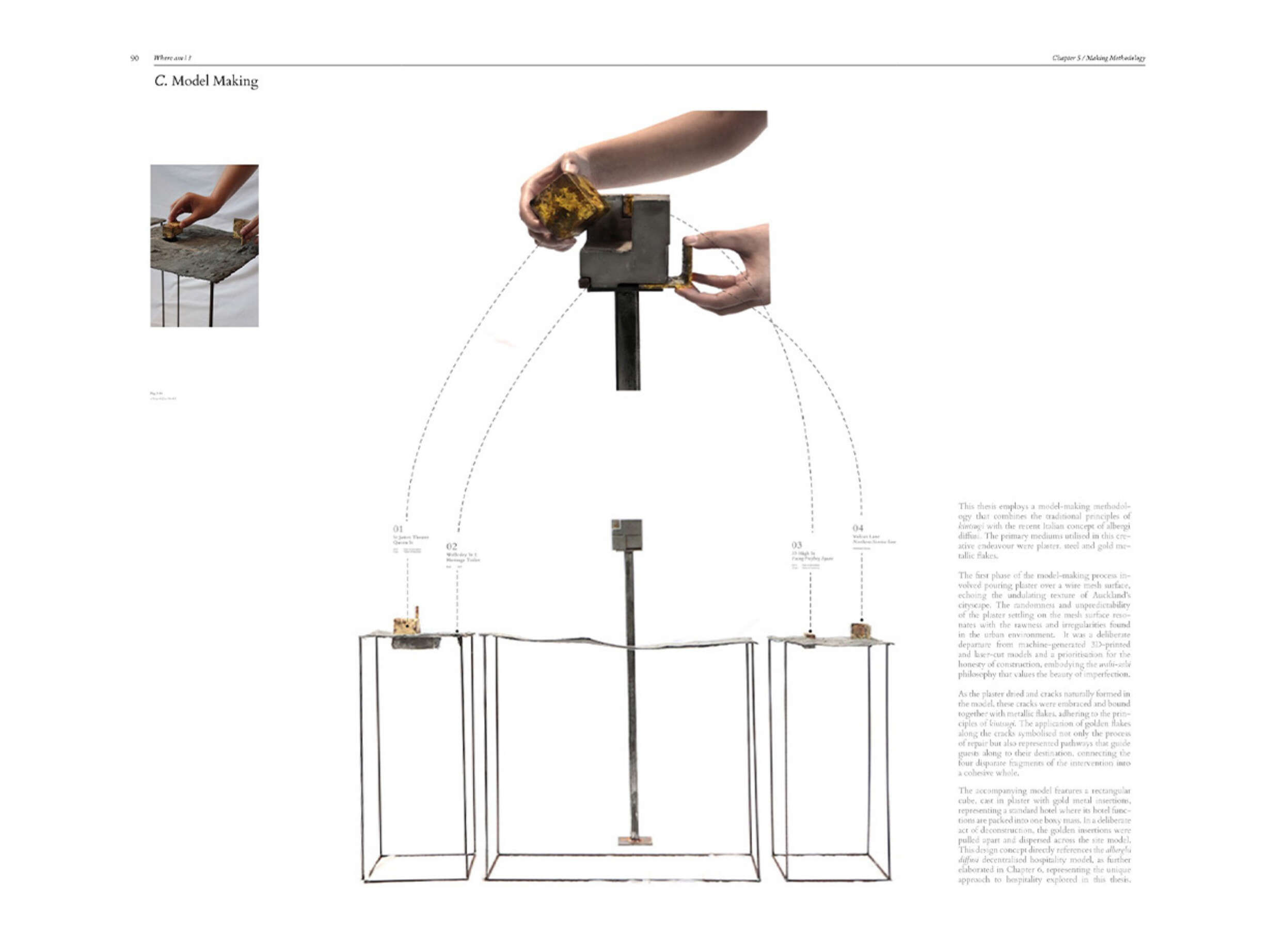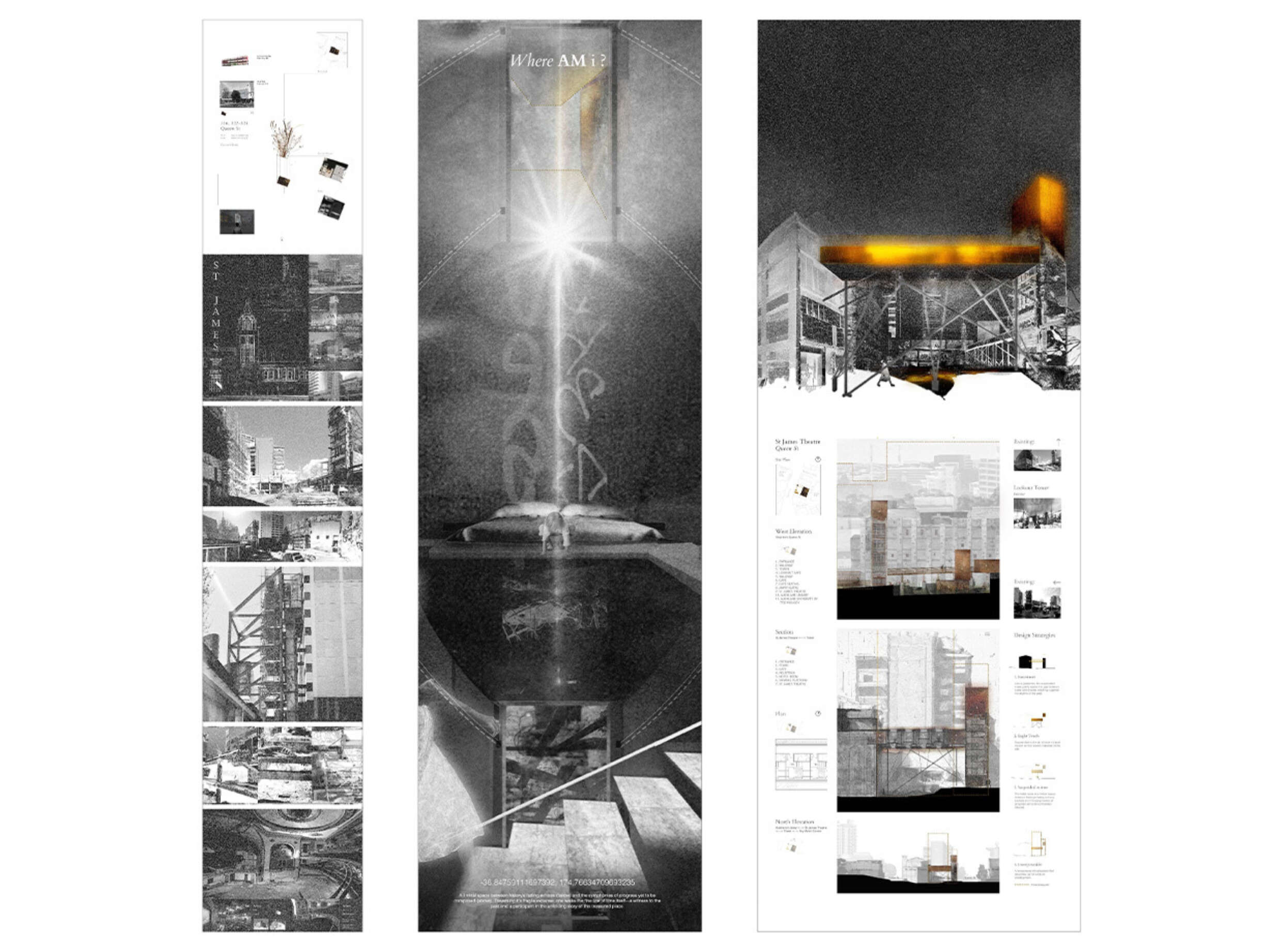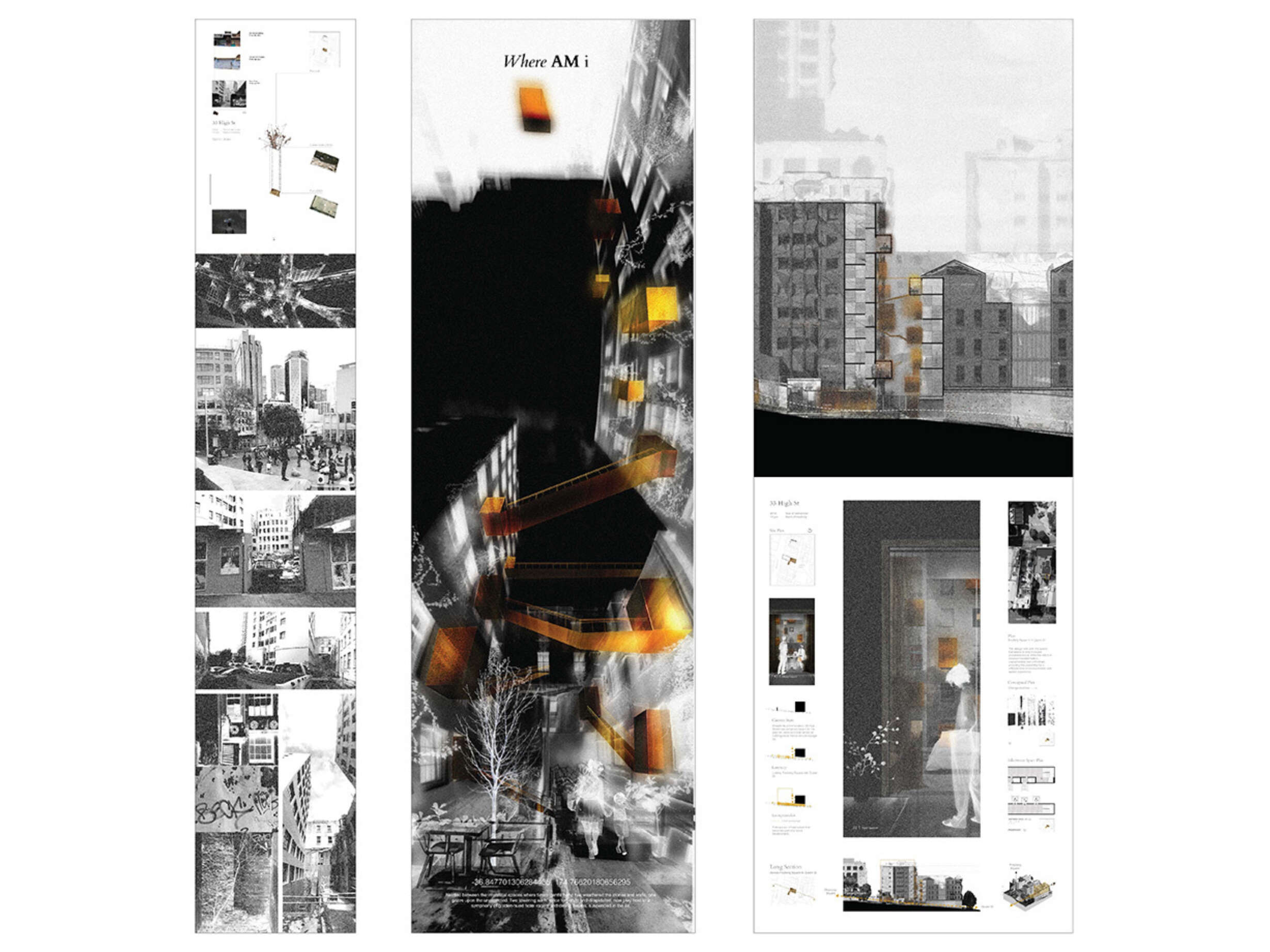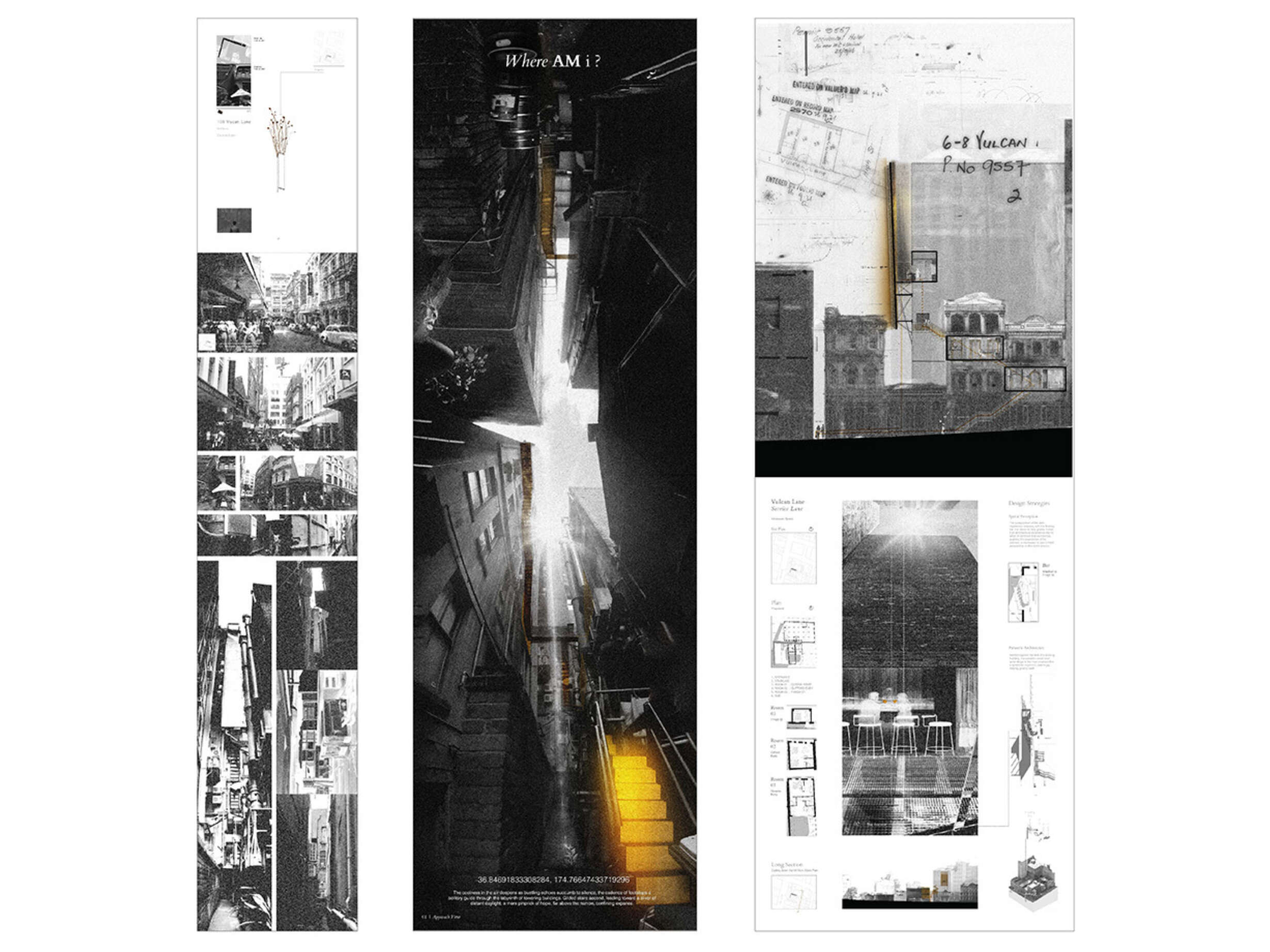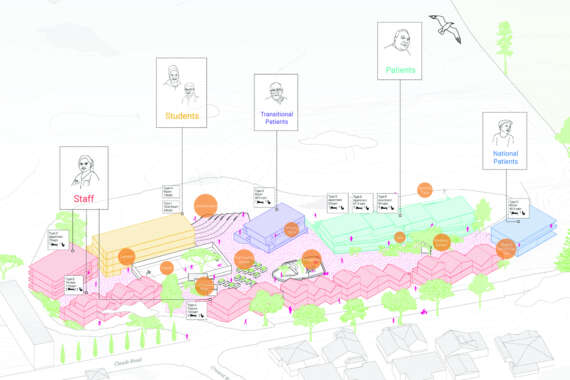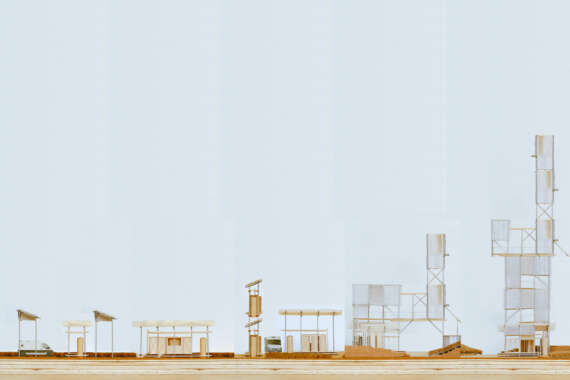Where am I?
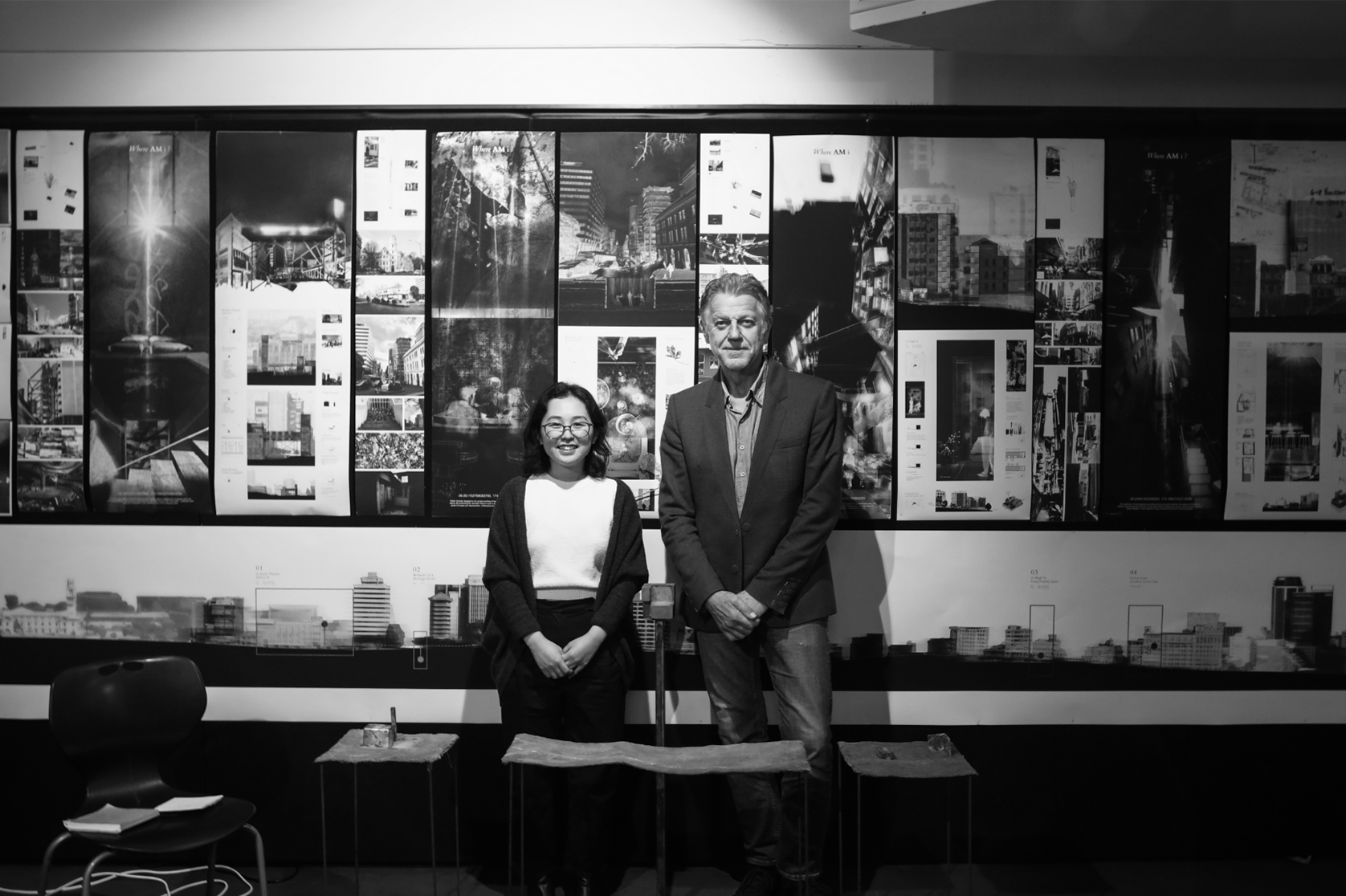
In the wake of luxury fashion houses popping up downtown and international hotel brands homogenizing key urban vistas, treating visitors to more of the 'same old same old’, this thesis reimagines the potential of interstitial spaces in the Auckland CBD. It proposes a hospitality model that embraces raw, authentic urban experiences, disrupting the heavily branded street experiences of Queen Street, High Street and Lorne Street.
If the city is a meeting of largely inscrutable individuals, the face of the city's streets resents a veil of familiarity. This is disrupted when a site is abandoned or even more so when a building is demolished. In behind-the-scenes locations with round-the-clock street activity, rough sleepers, and illicit happenings, this thesis envisions a distributed hospitality entity across four sites. This model, inspired by the Japanese kintsugi repair technique, celebrates rather than conceals trauma and fragmentation, reflecting the complex cycle of urban spaces.
As a study in urban activation, this thesis questions how cities can be explored through engagement with their raw, evolving morphology. It aims to provoke moments of wonder and disorientation, urging one to wake up and ask, “Where am I?” in a place unlike any other.







